Patient Care Facilities
Neurology and Neurosurgery Units have 112 beds in the C 401 and C 402 wards and have access to additional Semi-Private beds and Private beds in D block of 401 & 402.
NEUROLOGY
The Neurology unit handles all kinds of neurological problems, both acute and chronic. Patients with acute stroke, Guillain Barre syndrome and myasthenic crisis and cerebral hypoxia (hanging) are some of the acute cases admitted for treatment. We have experience in treatment of immune mediated diseases of the nervous system and we get referrals from all over India. Plasma exchange is being done for patients with Guillain Barre syndrome, acute disseminated encephalomyelitis and myasthenia gravis. Our unit does conventional machine plasma exchange and also manual plasma exchange. Manual plasme exchange is a very cost effective modality of treatment for patients with Guillain Barre syndrome.
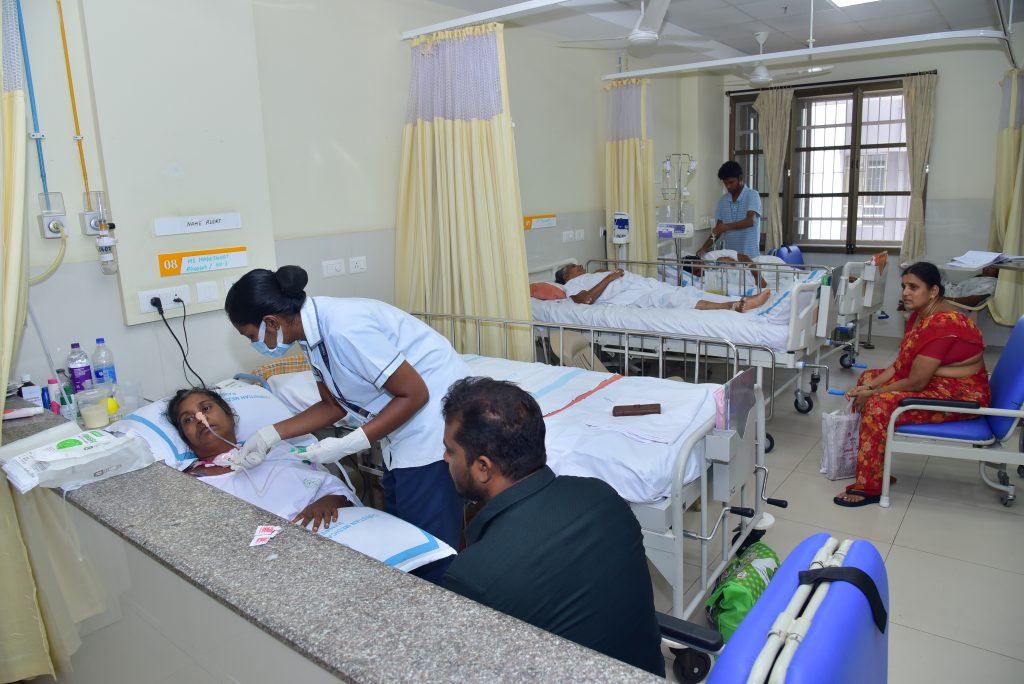
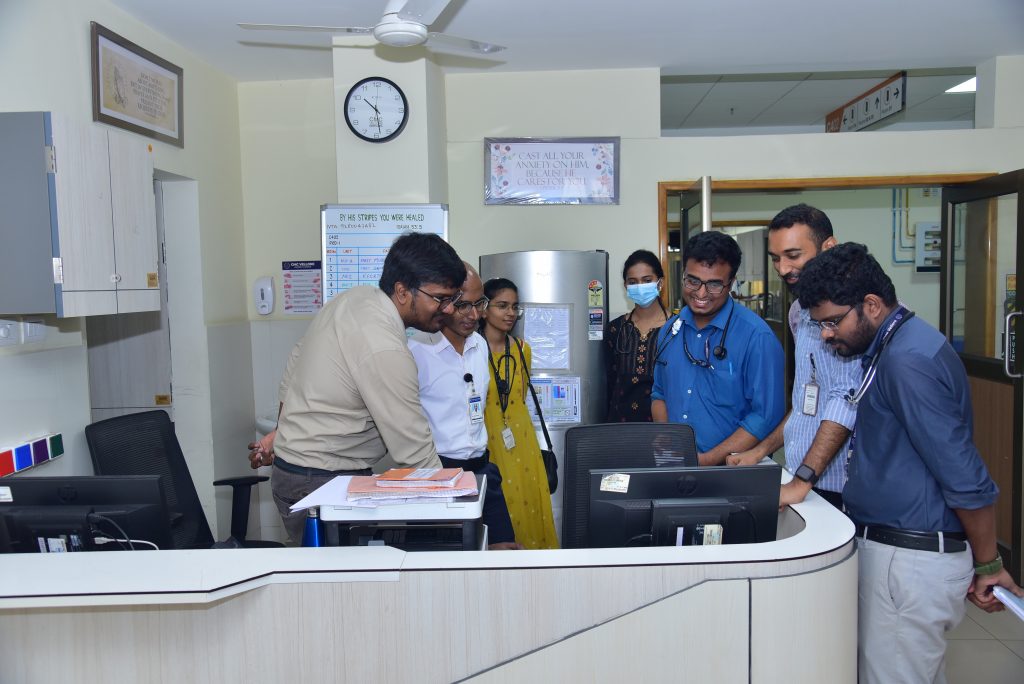
There are Outpatient clinics on every Monday and Thursday in the afternoon. There are specialty clinics for epilepsy and neuromuscular disorders. The Neuromuscular Clinic is being jointly held with the Physical Medicine and Rehabilitation department where complex neuromuscular problems are seen and management problems chalked out. There is a gait analysis lab where patients with Limb Girdle syndrome are sent and an attempt is made to assess response to treatment. We treat Duchenne muscular dystrophy with deflazocort. There is an interest in Cognitive Neurology and the department has a Neuropsychologist. New clinics which are being started are a Dementia clinic in association with Geriatrics unit.

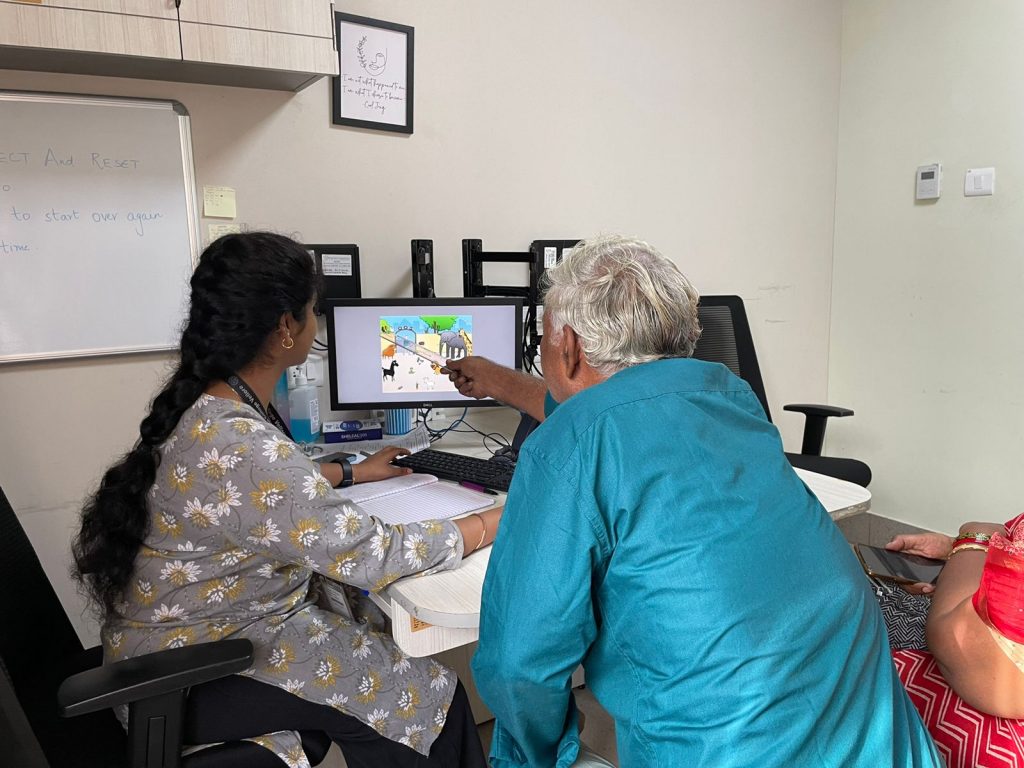
NEUROSURGERY
The Section of Neurosurgery is divided into three units, Neurosurgery Unit-1, Unit-2 and Unit -3 for the purpose of efficient delivery of patient care. All brain and spine disorders are managed by all the three units.
Brain
Brain tumors form the commonest disorder treated including gliomas, meningiomas, pituitary adenomas, craniopharyngiomas, vestibular schwannomas and intraventricular tumors. Other disorders treated include hydrocephalus, intractable epilepsy, movement disorders, infections such as pyogenic abscesses, tuberculosis, fungal infections and cysticercosis.
Spine
Degenerative spine disorders, cervical and lumbar are managed by both units with modern instrumentation techniques. Spinal dysraphism and congenital craniovertebral junction anomalies are commonly treated. We also manage spine infections and trauma. Of particular note is the management of spine and spinal cord tumors, both intramedullary and extramedullary.

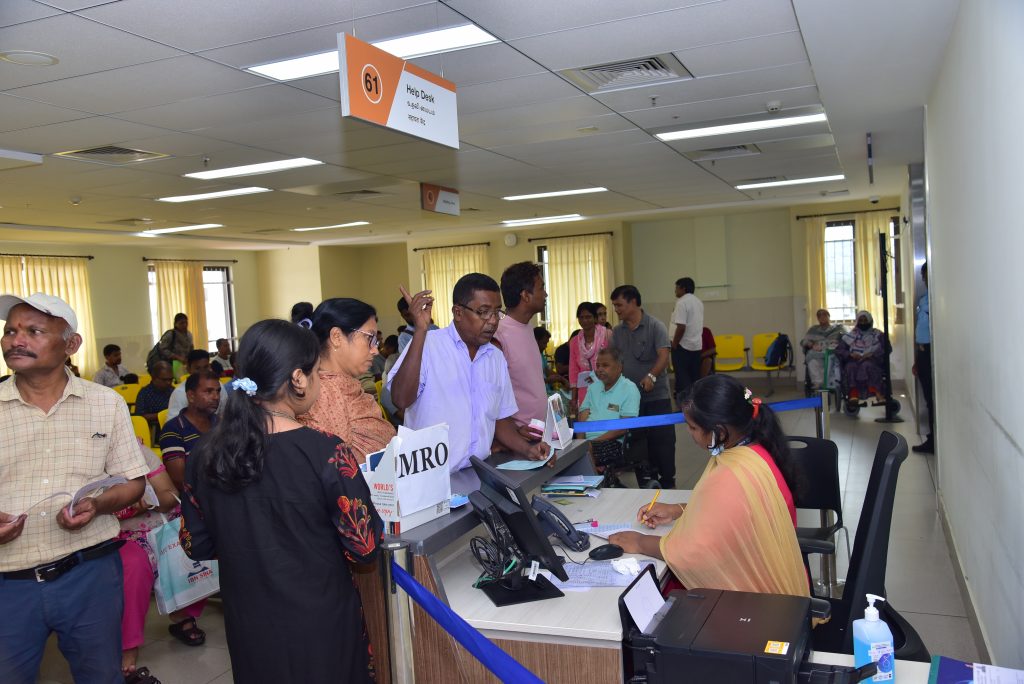
Equipment
The operation theaters are well equipped with microscopes, high speed drill systems, Ultrasonic surgical aspirators, endoscopic equipment for pituitary and intraventricular surgeries and stereotactic systems. Also available are intraoperative ultrasound for imaging and intraoperative neurophysiological monitoring. We also perform stereotactic radiosurgery for brain tumors and AVMs.
Although conventional stereotactic surgery was initiated in the Department in 1960 with a Bertrand stereotactic frame, the modern era of image guided stereotactic surgery using the Brown Robert Wells (BRW) system was introduced in 1987. Since then over 1800 stereotactic surgeries have been performed in the Department. There are 2 stereotactic frames (BRW and CRW) and an MR compatible frame (CRW) and lesion generator (Radionics RFG 3B).
We introduced Stereotactic Radiosurgery (SRS) and Stereotactic Radiotherapy (SRT) for the first time in India in June 1995 using the X Knife, LINAC based system, Since then over 500 SRS and SRT procedures have been done. This program offers the most economical package for these procedures.
Functional stereotactic procedures for Parkinson’s disease and other movement disorders (thalamotomy and pallidotomy) are also routinely being performed in the Department since 1987.
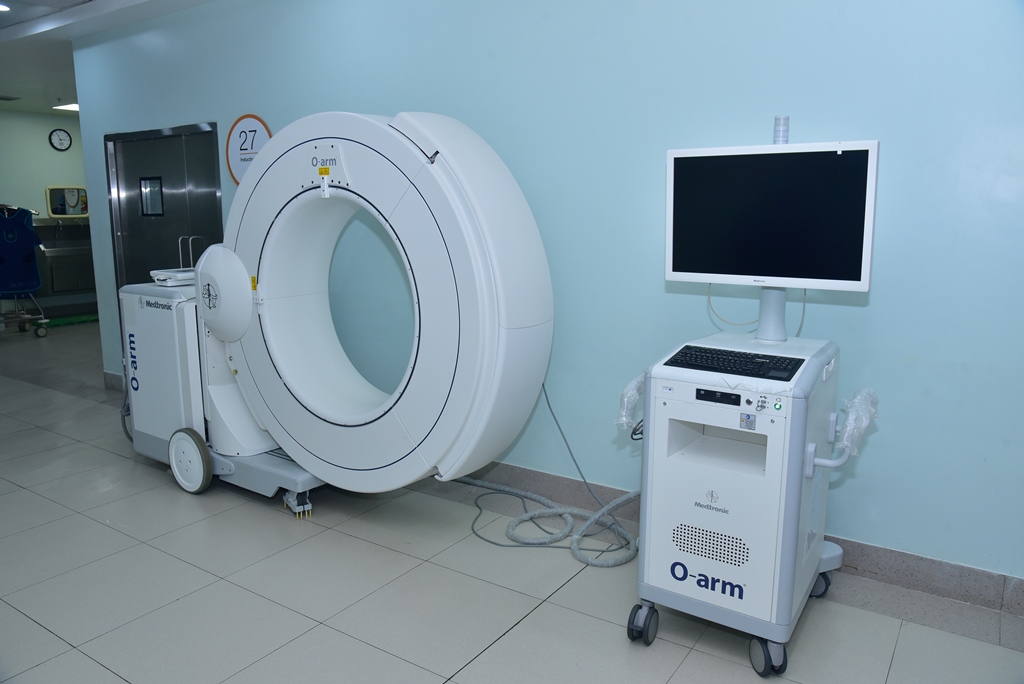
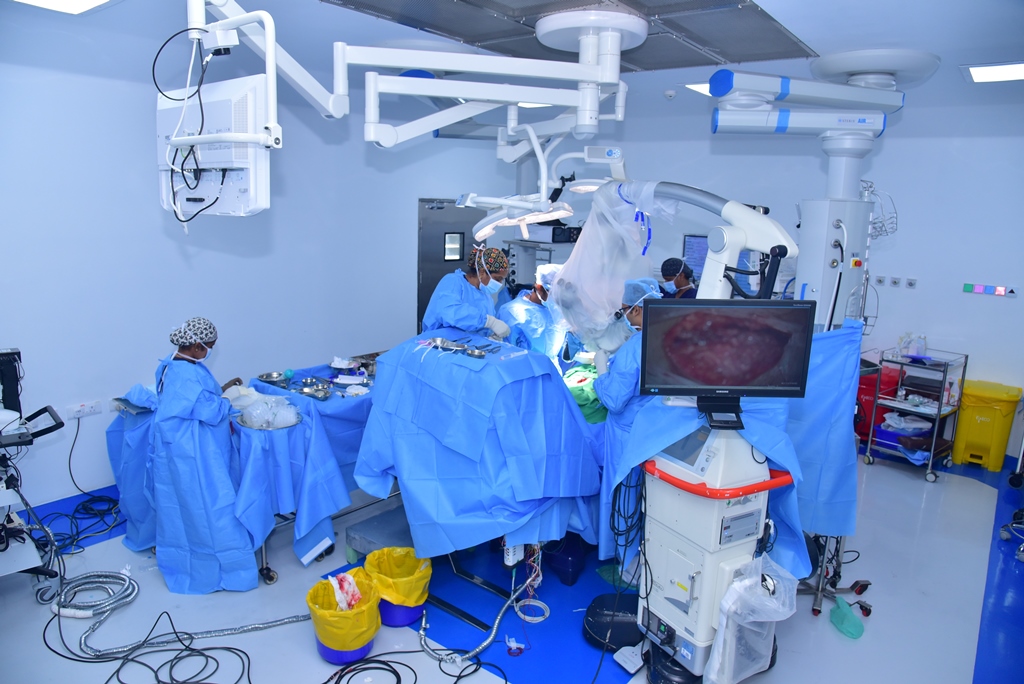
NEURO CRITICAL CARE
Dr Mathew Joseph, a trained neurosurgeon, manages the Neuro Intensive Care Unit and trauma service along with Dr Shalini Nair. There are 12 beds for immediate postoperative care and another 6 beds for those patients requiring more prolonged ICU care. Patients with traumatic brain injury have a separate trauma ICU (6 beds), 6 high dependency beds for non-ventilated trauma and 6 ward beds. The high dependency area also has a further 6 beds for Neurology and Neurosurgical patients. Facilities are available for ventilating 12 patients, and ICP monitoring is routinely performed for severe head injury.
The capabilities of the ICU have been considerably enhanced since then with coordination of equipment, personnel and protocol development. All beds are now equipped with multi-channel monitors connected to a central monitor, and the ICU has 10 intensive care ventilators and one transport ventilator. Exhaustive protocols have been developed for routine intracranial pressure monitoring, hemodynamic intervention, ventilation and weaning of neuromuscular diseases and other common situations encountered in the ICU. The Neuro ICU also receives several multi-system trauma patients when the Surgical ICU is unable to receive them.
Education is a high priority activity in the ICU. There are regular academic sessions for the nursing staff and seminars for the residents, and the ICU nursing and technical staff are acknowledged to be among the best in the hospital. In addition all fresh casualty medical officers receive training in head injury assessment. The ICU and HDA maintain a comprehensive computer database on all patients admitted, which has proved useful in obtaining data for research purposes.
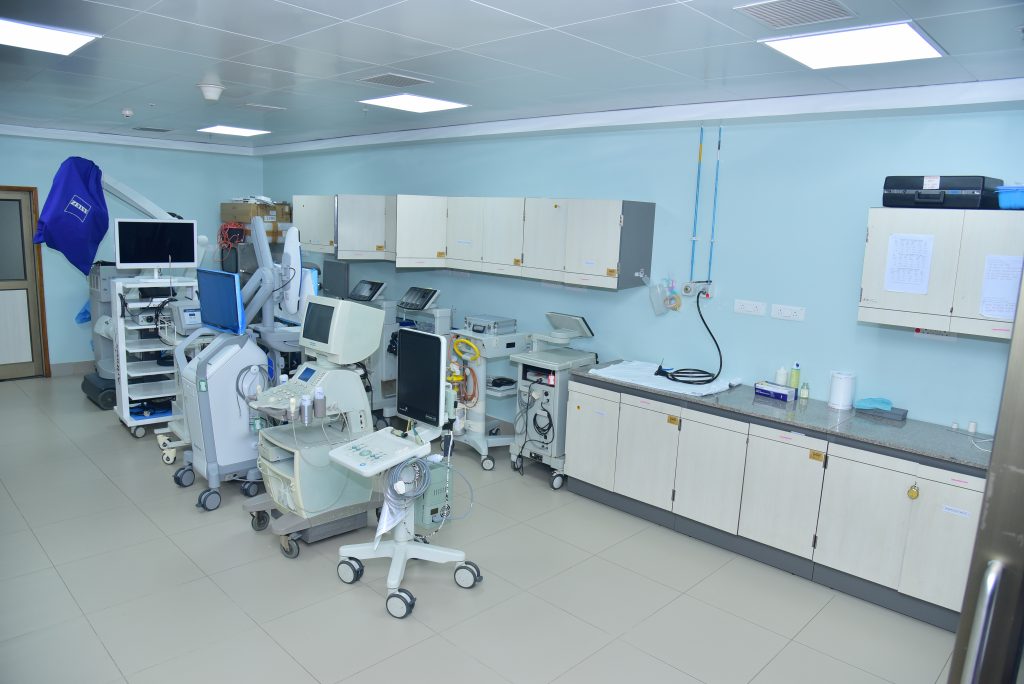
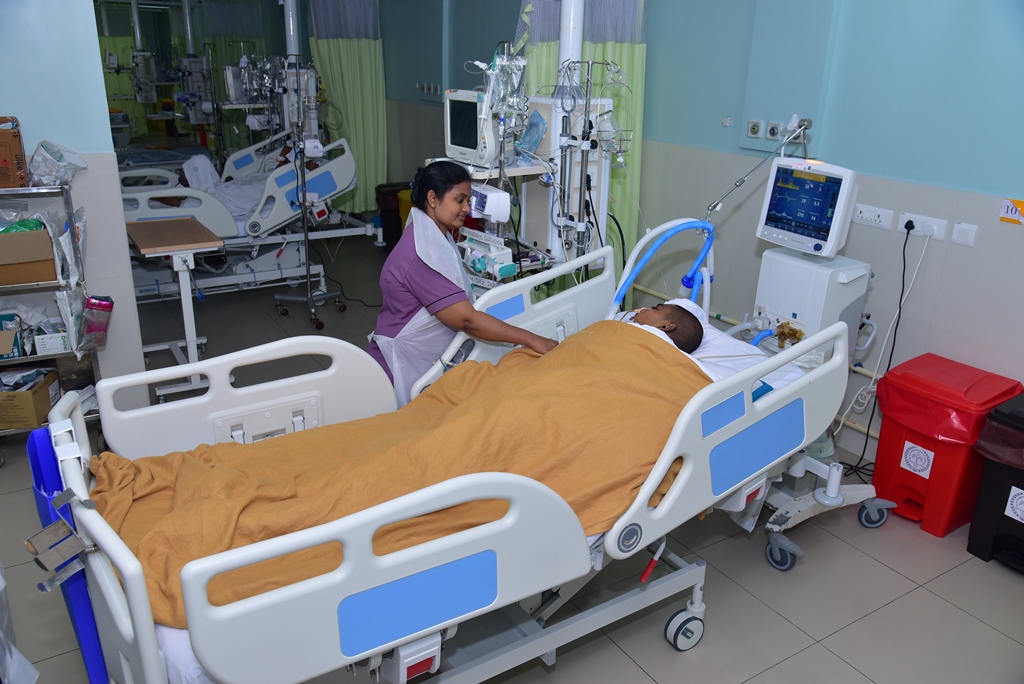
INTRAOPERATIVE MONITORING
The Neurophysiology laboratory handles Intraoperative monitoring procedures. Full-fledged Intraoperative monitoring (IOM) procedures were started in the year 1991. At present facilities and expertise are available to monitor patients who are considered to be at risk during neurosurgical procedures. Several techniques have been standardized to suit our requirements. At present it is feasible to monitor patients undergoing neurosurgical procedures for spinal cord, brain stem and cortex. The following techniques are employed –
1. Spinal cord surgeries such as intramedullary tumours, Scoliosis correction, arteriovenous malformations and tethered cord cases we use motor evoked potentials (MEP) and direct nerve stimulation techniques
2. For intrinsic brain stem mass, cerebello-pontine angle tumours, we localize motor nuclei, monitor facial nerve. For brachial plexus nerve injuries we identify branches and assess their functional status. For microvascular decompression cases brain stem auditory evoked responses (BAER) can be done
3. Central sulcus localization is done using SSEP monitoring. Direct cortical stimulation is done under general anaesthesia for localization of primary motor areas, and in awake craniotomies to localize the speech areas. Aneurysm surgeries are also done under SSEP monitoring
4. In epilepsy surgeries we do corticograms using grid electrodes and depth electrodes to localize epileptic areas.
At present intraoperative monitoring facility is provided to Neurosurgical units, Orthopaedic-Spine unit, Hand surgery department and General surgery unit.